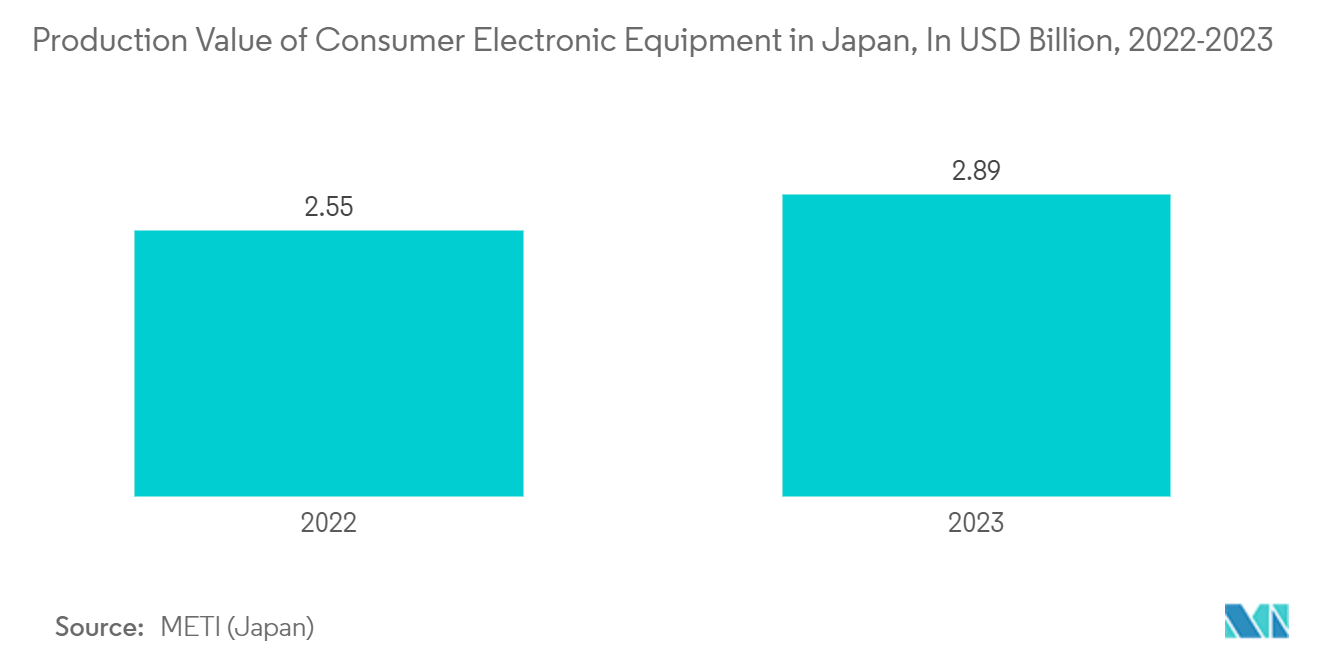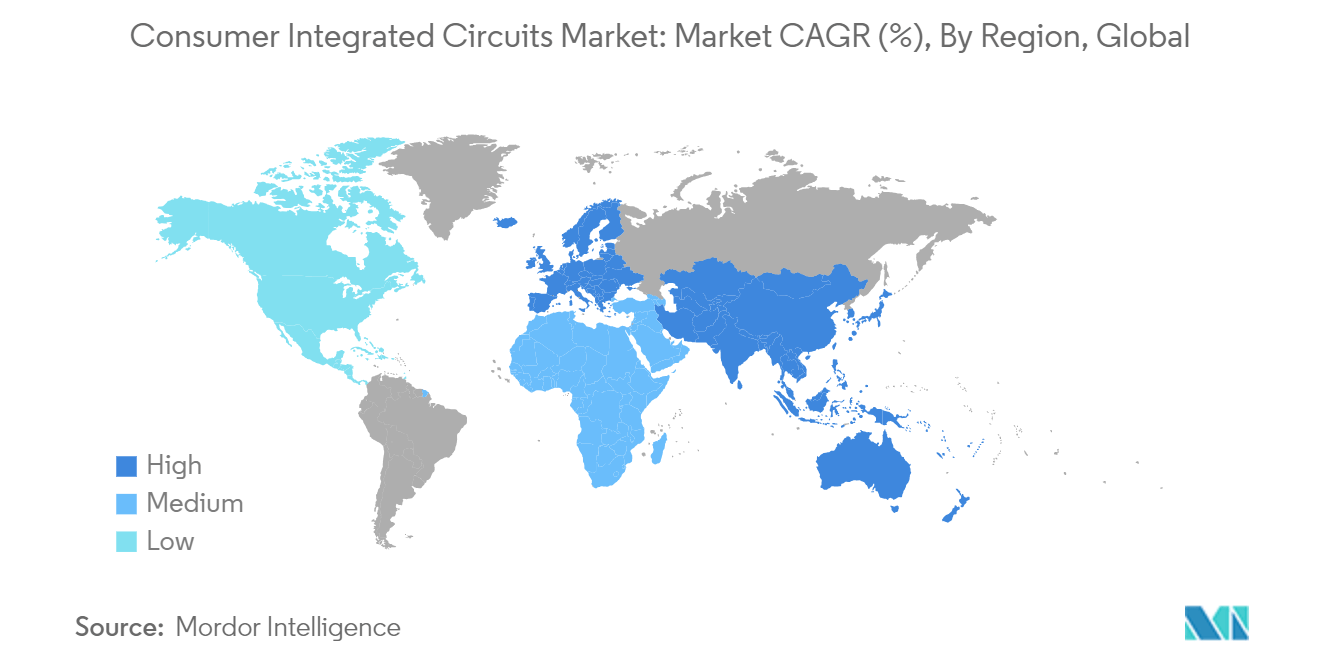Market Trends of Consumer Integrated Circuits Industry
Logic IC is expected to Witness a Significant Growth
- Logic ICs contribute to the miniaturization of electronic devices, making them more portable and convenient to use. This portability is a significant factor in the increasing demand for wearables and portable gadgets. In addition, logic ICs are designed to be more energy-efficient, extending battery life for portable devices and reducing power consumption for home electronics. This efficiency is highly desirable for consumers looking to minimize energy costs and environmental impact.
- The consumer electronics industry is witnessing a rise in flexible and wearable devices, including smartwatches, fitness trackers, and flexible displays. Logic ICs designed for flexible substrates and low-power operation will be essential in enabling the functionality of these devices while maintaining their form factor and energy efficiency.
- Moreover, Japan's Ministry of Economy, Trade, and Industry (METI) reported that the production value of consumer electronic equipment in Japan reached approximately JPY 418.2 billion (USD 2.89 billion) in 2023. Consumer electronic equipment is a cornerstone of Japan's electronics industry, alongside industrial electronic equipment and components.
- Furthermore, logic ICs have a well-established supply chain. These ICs are widely available from numerous semiconductor manufacturers like Toshiba, Renesas, and Nexperia B.V. This availability ensures a consistent and stable supply of components for consumer electronics manufacturers. Additionally, manufacturers often provide technical support, documentation, and reference designs for their logic ICs, making it easier for designers to integrate them into their products.
- In addition, it contributes to cost reduction in consumer electronics manufacturing through various means. Their integration and compactness reduce the need for additional components and circuitry, resulting in cost savings. Additionally, logic ICs can be mass-produced at scale, benefiting from economies of scale and reducing manufacturing costs. Logic ICs offer speed, scalability, design flexibility, reliability, availability, and support while adhering to industry standards. These ICs contribute to cost reduction and are part of a global supply chain, making them highly suitable for the diverse needs of the consumer electronics industry.

Asia-Pacific is Expected to Hold a Significant Market Share
- Asia-Pacific is a global manufacturing hub for semiconductor production, with countries such as China and Japan leading in Semiconductor manufacturing and assembly. The presence of leading semiconductor foundries, assembly and testing facilities, and electronics manufacturing services enables efficient and cost-effective production of logic ICs. It is home to a vast and rapidly expanding consumer electronics market.
- According to the MIIT (Ministry of Industry and Information Technology), China has secured the top position worldwide in the production and sales of consumer electronics through its enhanced innovation and brand-building capacity. With the increasing investments in the region to improve its consumer electronics production capabilities, the market is expected to gain traction. According to (CAICT), the shipment volume of 5G mobile phones grew from 78.8% of the total mobile phone shipments in the country in 2022 to 82.8% in 2023. The consumer electronics market in the region is expected to increase significantly owing to the rising market demand.
- In addition to this, according to the Indian Brand Equity Foundation (IBEF), India's goal is to reach a target of USD 300 billion in electronics manufacturing and USD 120 billion in exports by 2025-26. Furthermore, the Union Budget 2023-24 has earmarked INR 16,549 crore (USD 2 billion) for the Ministry of Electronics and Information Technology, representing a substantial annual increase of approximately 40%. Numerous companies are consistently making significant investments in establishing manufacturing facilities, which will generate demand for various analog IC devices.
- The explosive growth of smartphones and smart home devices in recent years has fueled the demand for analog ICs in India and South Korea. South Korea, one of the largest countries, exhibits a substantial mobile phone penetration rate and is home to major vendors like Samsung and others. Moreover, the increasing adoption of the fifth-generation (5G) wireless technology for digital devices is also a significant contributing factor to the surging demand for connected devices and smart products, thereby increasing the need for the analog ICs used in these devices.


